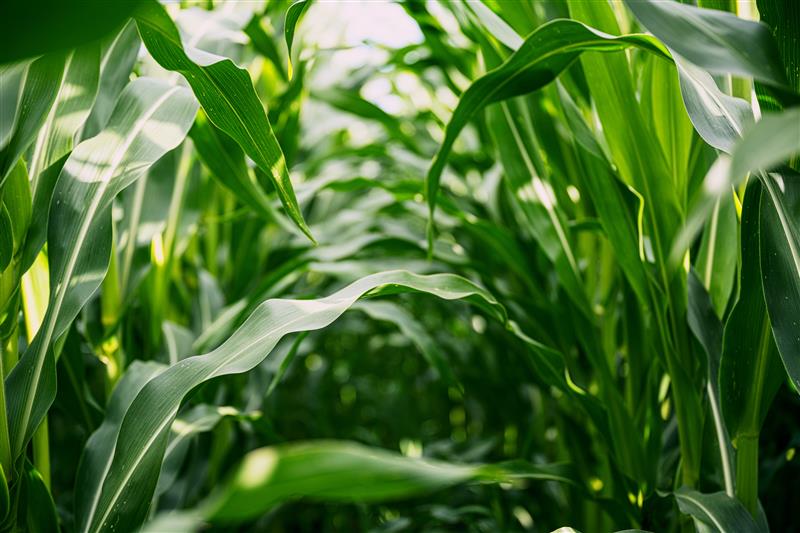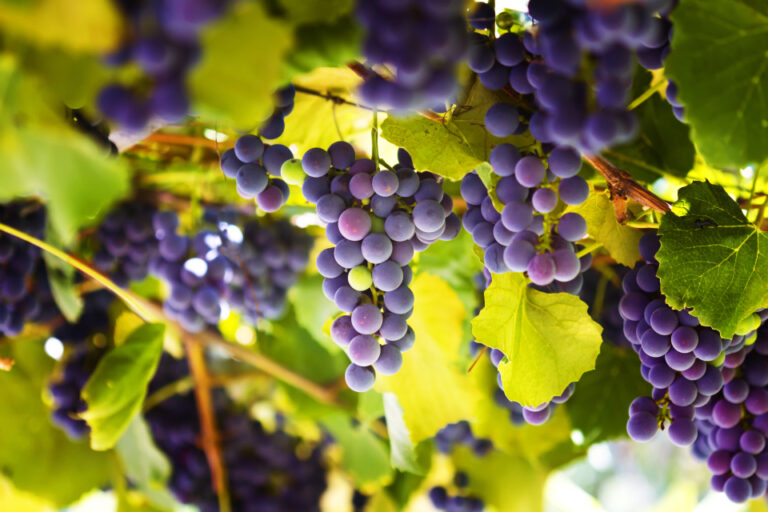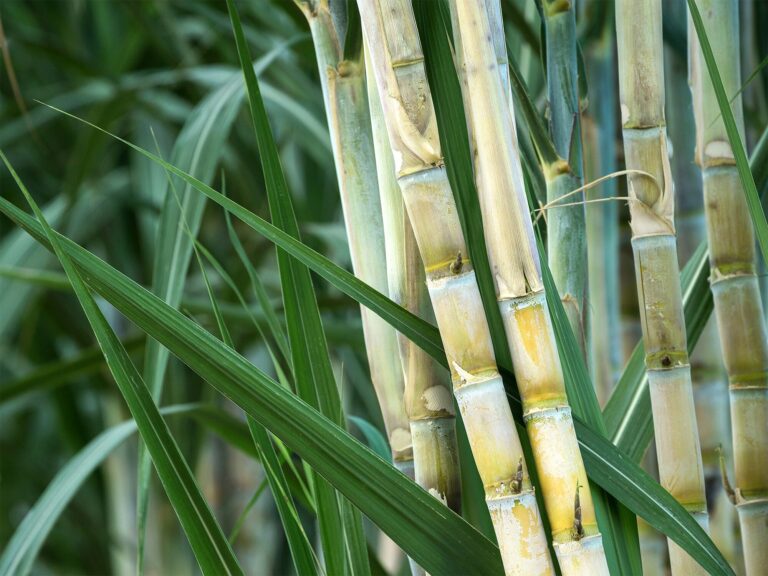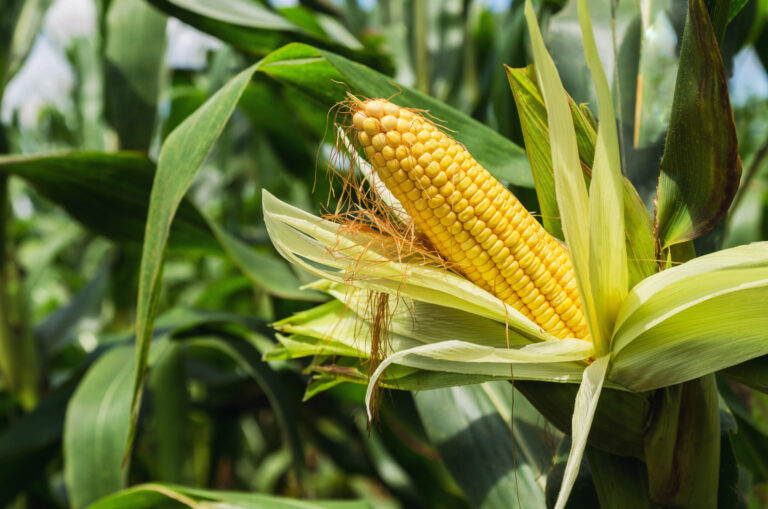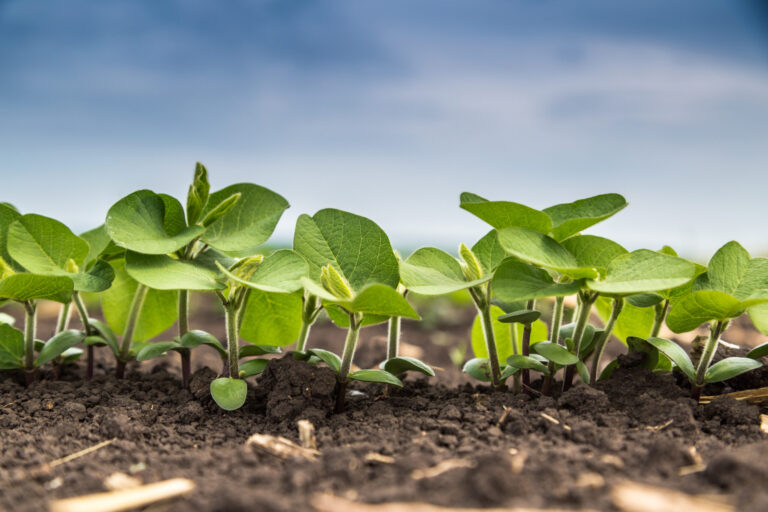Leaf area index (LAI) measures the amount of leaf area a canopy has over an area of ground. A plant’s job is to utilize photosynthesis to capture as much light and CO2 as possible, so a higher LAI means a greater canopy coverage, which ultimately means more sunlight interception. LAI in corn has steadily increased over the years, thanks in large part to advancements in hybrid genetics that allow for higher planting densities. Modern corn hybrids are more upright and better adapted to higher density planting with up to 38k plants per acre within a 30 inch row spacing, meaning farmers can plant more corn per acre, leading to an incremental but consistent boost in yields, as more leaf area means more photosynthetic capacity. However, this increase in planting density and ultimately LAI also comes with trade-offs; denser canopies can intensify competitive plant stress, especially during periods of drought or high heat.
Next-Generation Biostimulants: Critical During Pre-Grain Fill
As yield potential rises, so does the need for next-generation biostimulants which maximize efficiency and photosynthetic capacity, minimize stress, and help the plant keep pace with the growing demands on each acre. They help close the gap between potential and actual yield by supporting the plant through the most critical growth windows. In high-density corn systems where every plant needs to be working at full capacity, biostimulants can deliver meaningful advantages across several key areas:
Chlorophyll Density:
Increased chlorophyll density allows the plant to absorb more light and power the photosynthetic process, resulting in greater energy production and allowing the plant to do more with the same amount of sunlight. This increased chlorophyll density in higher-density corn plantings makes the most of the increased LAI while mitigating some of the increased competition for light interception.
Greater Individual Leaf Area:
Increased individual leaf area complements the gains in LAI that come with higher planting densities. While more plants per acre naturally increase LAI, having each plant contribute more leaf surface amplifies that effect, resulting in a canopy that captures more light and drives higher photosynthetic capacity per acre. This denser, more productive canopy supports better energy production during critical growth stages.
Complementary Nutrition:
By supporting increased chlorophyll density and photosynthetic capacity, next-generation biostimulants create an Optimization Window (check out our recent blog post here for more on the Optimization Window) – an opportunity during which the plant is prepared for maximized performance but needs additional resources in order to take advantage of that opportunity. Next-generation biostimulants provide those additional resources – in this case, complementary nutrition is needed for the crop to take advantage of its increased photosynthetic capacity.
Iron, manganese, and nitrogen work together to provide complementary nutrition by supporting chlorophyll production and photosynthetic processes. Nitrogen is the backbone of chlorophyll and amino acids, making it essential for photosynthesis and protein synthesis. Iron plays a key role in chlorophyll formation and electron transport during photosynthesis. Manganese is crucial for splitting water molecules during photosynthesis and activating enzymes that support growth and stress defense. Zinc supports internode elongation and enzyme activity for protein synthesis, which is vital for maintaining structure in a crowded canopy.
How to Strike a Balance with Biostimulants
Research has shown that as planting densities continue to increase, so will interplant competition, increasing stress on plants. With more competition for critical resources, environmental stress can take a bigger toll. The better the plant manages environmental stress, the better it is able to protect yield potential.
FlexForce® is a dual action biostimulant that pairs organic acids from our Transit® biostimulant, plant extracts, and key complementary nutrition, to support the corn plant during the critical pre-grain fill window. FlexForce increases leaf area, improves chlorophyll density, optimizes photosynthetic pathways, and provides complementary nutrition to capitalize on the additional growth.
- Plant extracts have been shown to increase corn plant height, leaf area, and ultimately grain fill, and improve stress tolerance
- In research conducted on our biostimulant Transit, Transit increased total leaf area by 4% over the untreated control (UTC), and total leaf length by 3.5% over the UTC
- Transit also increased chlorophyll density by 124% over the UTC
Optimizing LAI for better grain fill and yield is all about balance. Increasing plant density per acre raises LAI, but it also intensifies competition among plants. FlexForce helps improve performance in these high-density conditions by reducing competitive stress and enhancing each plant’s photosynthetic capacity, helping to set the stage for more successful grain fill and higher yields.
